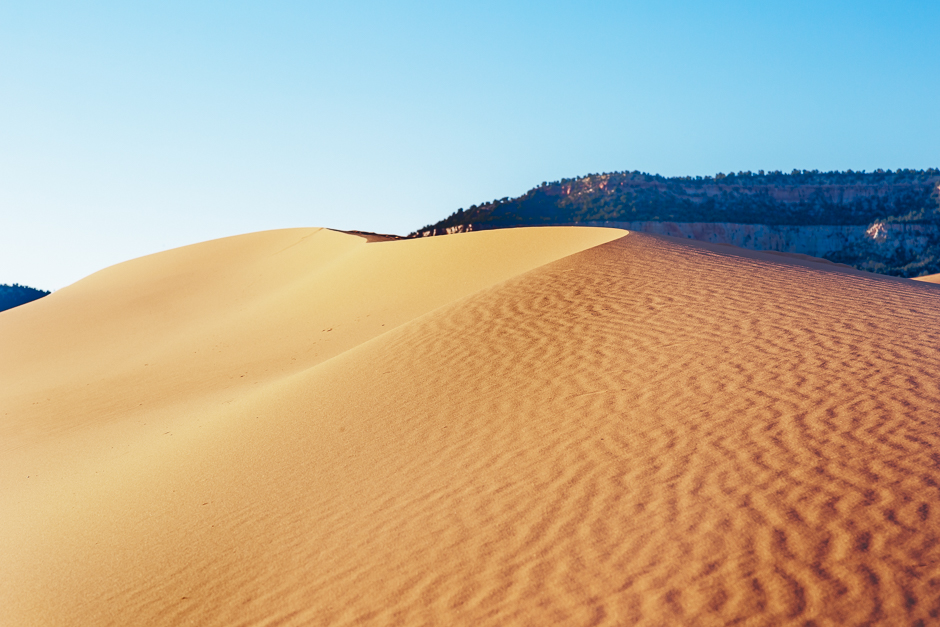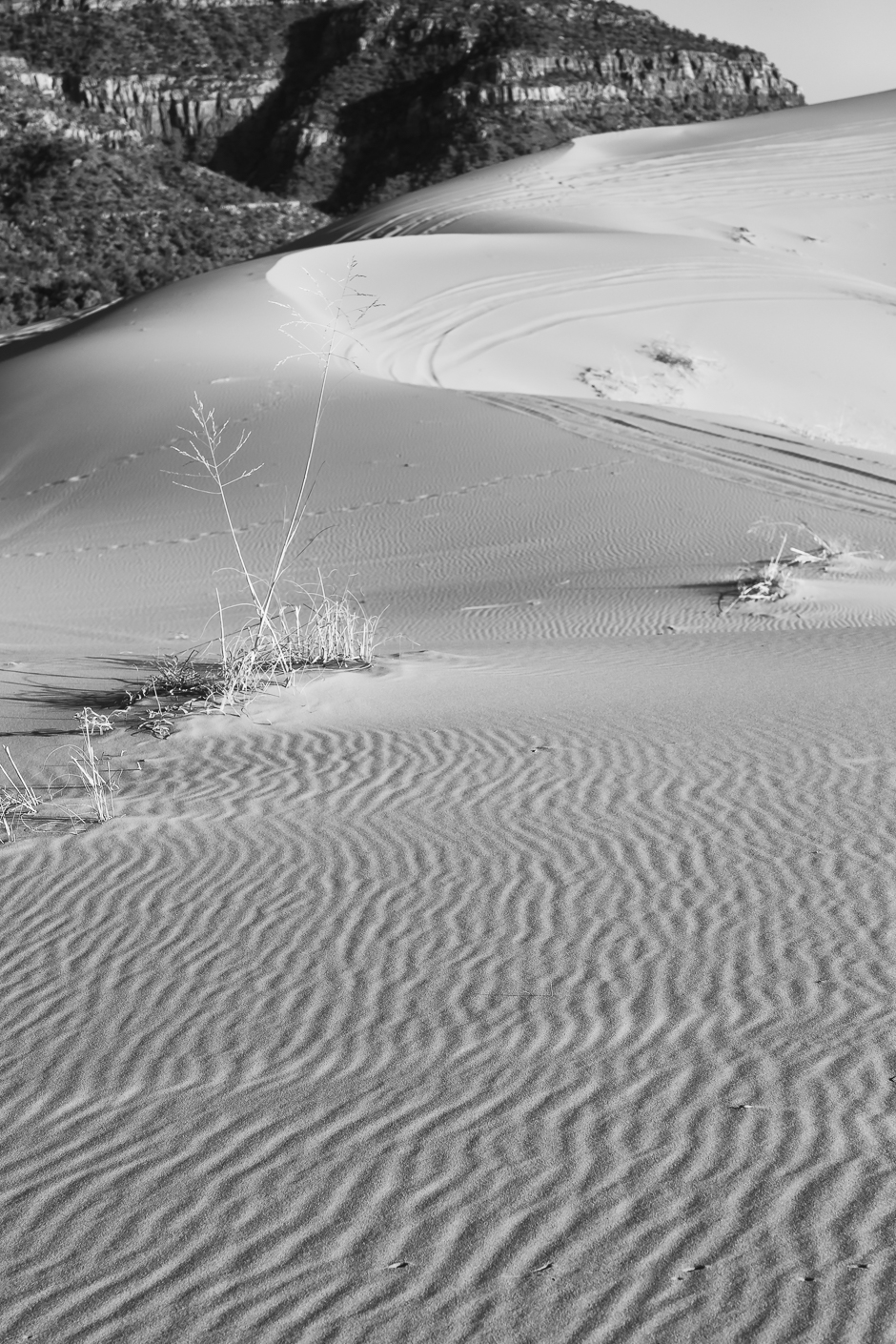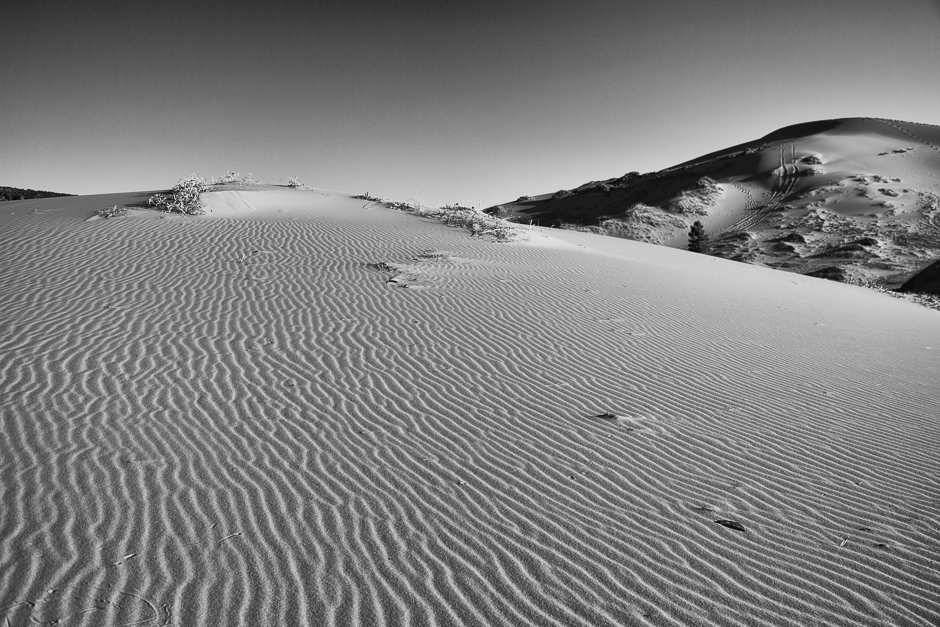En route to Zion National Park last week, Alex and I made a stop at Coral Pink Sand Dunes State Park.
Coral Pink Sand Dunes State Park is located in southwestern Utah. The park features uniquely pink-hued sand stone located beside red sandstone cliffs.
The dunes are formed from the erosion of pink-coloured Navajo Sandstone surrounding the park. High winds passing through the notch between the Moquith and Moccasin Mountains pick up loose sand particles and then drop them onto the dunes. The dunes are estimated to be between 10,000 and 15,000 years old.
The sand does not show its pink hues in the bright light of day. It tends to look more like plain, garden-variety sand. We did observe that the pink hues emerged later in the afternoon as sunset approached.
I found the photography challenging. The park was very busy on the Sunday afternoon we were there. The dunes increasingly became marked with footprints and tire tracks as the visitors climbed the dunes and frolicked in their All Terrain Vehicles. They made our task more difficult, as we strived to avoid these prominent indicators of human presence. The good news is that winds and rain very quickly restore the dunes to their natural appearance. People are able to enjoy this large natural playground without inflicting permanent damage. Photographers have to work harder to capture the park in its undisturbed state.
The best way to get around the tire tracks and footprints is to exclude them from the scene, when possible. There were not many such opportunities. The following picture is the exception. This was the only shot I was able to locate with no tracks and prints. I call it “Knife Edge” for the sharp line sculpted by the wind between the windward and leeward sides of this dune.

Removing the blemishes from a photo is an option, But in the case of these dunes it would have been never ending, tedious cloning. I chose to forgo that choice. Instead, I have elected to leave the problems or emphasize other features in the image to draw the viewers’ attention. These features would be colour, shading and contrast and texture, for example.
I think these pictures can work well in black and white. But that achieved very little in diverting the attention from the tracks in this particular picture. I might have been more successful with stronger shadows. Also, there is a totally different picture possible here, created by simply cropping out the upper one third and leaving the scrub bush and the rippled sand in the foreground. This picture had some animal tracks (natural) and the ATV tracks were tolerable, but most importantly I wanted to retain the shape of the dunes. I left it alone.

In this picture there are three dunes. The two closest to the front aren’t too bad but the one in the very back was badly marked with footprints. In this case, I blurred and darkened the back dune and strengthened the shadows in the two closer dunes. The foreground is dominant and hopefully draws closer scrutiny away from the second and third dunes.

I chose not to do anything with this one. The major part of the scene, the foreground is free of a human presence. There are tire tracks on the hill in the background but not to an extent as to draw a lot of attention away from the dominance of the foreground.

In this picture, I edited heavily with colour and texture in the foreground to command attention. The tracks in the background are relatively consistent, flowing uniformly across the middle of the scene. I find this to be less distracting.

Preparation of the photographs in this post proved to be more of an exercise in problem-solving than I am accustomed to. I hope I’ve succeeded in producing some interesting images and at the same time shared with you that all pictures are not perfect but there are things that can be done to de-emphasize the problems.

